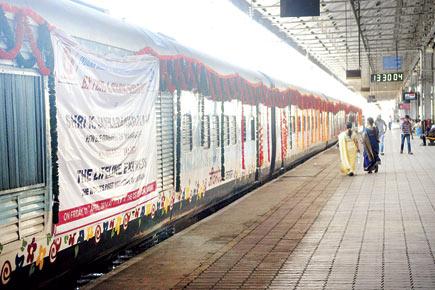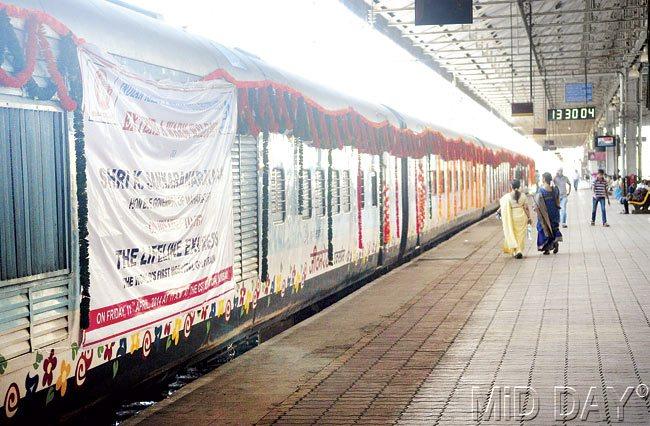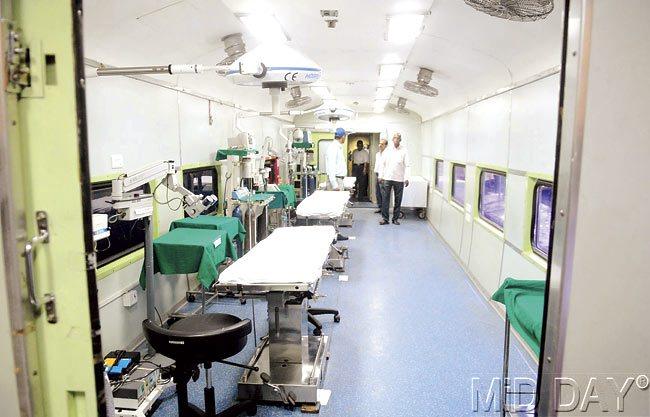The Lifeline Express, boasting of high-end facilities, could have helped victims of Sunday’s Diva-Sawantwadi passenger train derailment get medical attention when they needed it most

For victims of Sunday’s Diva-Sawantwadi passenger train derailment, it was a case of tragedy piling upon tragedy. It turns out that as crucial minutes ticked by, with the victims writhing in agony and villagers struggling to get them medical attention, the Central Railway had a state-of-the-art hospital on wheels the Lifeline Express standing at CST as an exhibit for the curious. CR could have thrown the victims a lifeline, but it didn’t.
ADVERTISEMENT

The Lifeline Express, which was brought to Mumbai for an exhibition last month, boasts a full-fledged operation theatre and other equipment (above right) which enable it to function as a hospital on wheels. Pics/Bipin Kokate
After a revamp, the Lifeline Express touted as the world’s first hospital on a train was brought to Mumbai in April for an exhibition between the 9th and 12th of the month. Since then, the train which boasts a full-fledged operation theatre and other equipment which enable it to function as a hospital on wheels has been parked on platform number 10 of CST. Chief Minister Prithviraj Chavan had also visited CST to take a look at the train.

“It was possible for us to take this train to the site of the accident, but it was just kept standing there instead. It is ironic that the villagers and rescuers had to take victims to hospitals many hours away when a full-fledged hospital on wheels could have reached the accident site,” said a CR source. Another official said there were only four ambulances at Roha, making it difficult to take the victims to hospitals or give them immediate relief.
Passing the buck
S K Sood, general manager, CR, said, “Lifeline Express belongs to an NGO. It is not meant for railway accident victims, though surgeries, operations and other medical treatments are performed for poor people in rural areas. No doctors have been appointed for this express.”
However, when mid-day spoke to Rajnish Gourh, CEO of the train, he said, “The Lifeline Express has a schedule as per which it will now go to Jharkhand. However, since the derailment was a major accident, the government or the railways could have approached us for help. Depending on the kind of medical emergency, we could have arranged a team of doctors for the train.”
Other options pale
The railways also has accident relief trains and medical vans for use in emergencies. One such relief train was standing at Kalyan station when the accident occurred and it was sent to the spot, but it reached nearly two hours late. As per the rule, an accident relief train or medical van should be available every 250 km.
These relief trains cater mainly to those victims who can be given initial medical care and then sent to a hospital. “It takes a minimum of 15 minutes for us to arrange and send an accident relief train to the site,” added Sood. Another senior Central Railway official said that doctors normally don’t go to accident sites and expect the victims to be taken to the nearest tertiary hospital as it’s easier for them to be treated there.
 Subscribe today by clicking the link and stay updated with the latest news!" Click here!
Subscribe today by clicking the link and stay updated with the latest news!" Click here!






